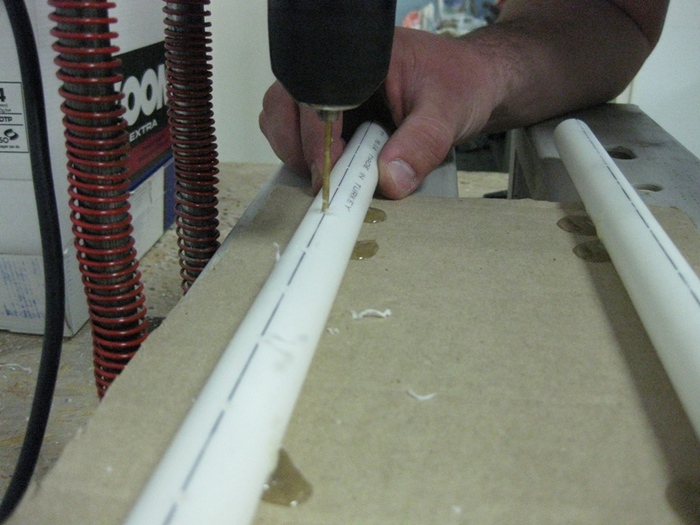Manufacturing Wi-Fi antenna
A few months ago, my work colleagues and I faced the challenge of tying the access point from a remote house and a wheelbarrow at work with a net, so that it worked well and the packets were not lost. Following the old adage “Figures are copper!”, It was decided to be connected by air. For what a cheap WiFi card was purchased for clubbing. But here's an ill luck, the house doesn’t stand aside, though not a kilometer, but it’s still not near, but in direct view, it’s about 150 meters. Of course there was a connection, but the percentage was still small. We climbed to the Internet at the local store website, looked at the prices for antennas ... then the toad came :) With the words, “Oh, well, FIG, I myself can”, I started a long, but entertaining and fascinating work :)
An Internet was scanned for antenna circuits, and the fundamentals of physics, wavelength, polarization, etc. were studied and recalled on the move. A pair of antennas were made from scrap materials that turned out to be babin from under the blanks. But over time, they no longer satisfy us, so I will not delve into the manufacture of these antennas.
It was decided to do it in an adult way and make a wave channel, or rather two at once, so that it beats on both sides.
Found a scheme, thought about the material, and did not find anything better, how to use polymer pipes :) Here is a short photo report with comments.
1) A 16-element wave channel circuit was found.
')

2) I bought a pipe, cut it

3) Cut the elements. It was important to do exactly the same with the scheme, because we would not measure the wavelength on our own.
I brought the barbell from the house, cut the elements, then stubbornly grind off extra millimeters and tenths of them

4) Measured and made holes in the tubes

Next, painstakingly and not without effort, I inserted each element into the holes, leveling
Next, a 50-ohm coaxial cable and connectors were purchased (the most expensive of the whole crafts). Then everything was compressed and the antenna is ready :)

(after the photo was taken, the cable was cut in half to avoid loss)
By the way, yes! Two wave channels were made in one working day, and it was Radio Day!
ps the percentages have doubled, the packets are not losing, we have a stable relationship ...
before the antenna was ready the speed was 24 mbps, after 48 mbps
UPD: wave channel layout with dimensions

A good site with all sorts of schemes of different types of antennas
UPD2:
materials that were involved:
- polypropylene pipe
- copper wire
- 50 ohm coaxial cable
- SMA connectors
An Internet was scanned for antenna circuits, and the fundamentals of physics, wavelength, polarization, etc. were studied and recalled on the move. A pair of antennas were made from scrap materials that turned out to be babin from under the blanks. But over time, they no longer satisfy us, so I will not delve into the manufacture of these antennas.
It was decided to do it in an adult way and make a wave channel, or rather two at once, so that it beats on both sides.
Found a scheme, thought about the material, and did not find anything better, how to use polymer pipes :) Here is a short photo report with comments.
1) A 16-element wave channel circuit was found.
')

2) I bought a pipe, cut it

3) Cut the elements. It was important to do exactly the same with the scheme, because we would not measure the wavelength on our own.
I brought the barbell from the house, cut the elements, then stubbornly grind off extra millimeters and tenths of them

4) Measured and made holes in the tubes

Next, painstakingly and not without effort, I inserted each element into the holes, leveling
Next, a 50-ohm coaxial cable and connectors were purchased (the most expensive of the whole crafts). Then everything was compressed and the antenna is ready :)

(after the photo was taken, the cable was cut in half to avoid loss)
By the way, yes! Two wave channels were made in one working day, and it was Radio Day!
ps the percentages have doubled, the packets are not losing, we have a stable relationship ...
before the antenna was ready the speed was 24 mbps, after 48 mbps
UPD: wave channel layout with dimensions

A good site with all sorts of schemes of different types of antennas
UPD2:
materials that were involved:
- polypropylene pipe
- copper wire
- 50 ohm coaxial cable
- SMA connectors
Source: https://habr.com/ru/post/69502/
All Articles